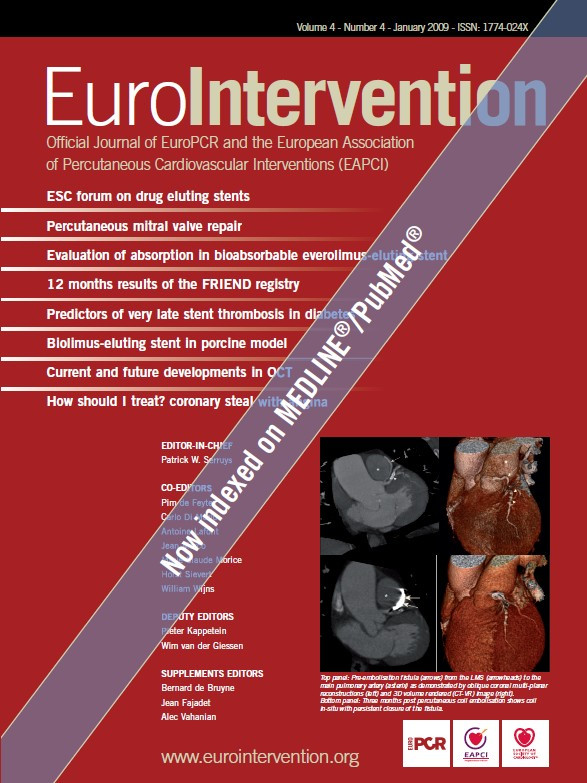Coronary revascularisation in women with either CABG or PTCA has been burdened with higher mortality and complications rates. Due to improvements in operative surgical techniques and PCI materials, a general increase in success rates for both techniques has occurred over the past decade1-3. However, today we lack trials comparing the two techniques in women and so the work of S. Vaina – who looked at this problem in the ART I and ART II trials, comparing stenting with surgery in multivessel coronary disease – is important.4
First of all, the study confirmed that females who need coronary revascularisation are sicker than men because of older age and comorbid conditions, particularly diabetes and hypertension. Unlike in other trials5, the anatomical features (number of diseased vessels, length of diseased segments) were not different between men and women.
Secondly, it is of note that there was an observed zero periprocedural mortality in either women or men in the PCI with DES arm in ART II, in comparison with a 4,1% in-hospital mortality of women in the CABG arm of the ART I study. Even if this represents an older trial, mortality after CABG in ART I was only 0,4% in men, confirming the higher mortality in women undergoing cardiac surgery in comparison with men observed in several previous studies6. Possible explanations range from small vessel size, to small body index, to worse general clinical condition in women. On the contrary, the increasing success of PCI in the last few years, especially in the DES era, have eroded the differences in results between men and women, making PTCA in women a safe procedure. We have to take into account, however, that in several large published trials7 the complication rate of PCI was higher in women due to a higher risk of vessel dissection, or the extension and the amount of calcifications in an older population, to small vessel size and marked vessel tortuosity.
Thirdly, the MACE-free survival at 1 and 3 years after PCI with DES in ART II in women was similar to female patients treated with CABG in ART I. The hard endpoints of death, myocardial infarction and cerebrovascular accident were less in PCI patients, demonstrating – at least at midterm follow-up – the safety of PCI in multivessel coronary disease in women. Between 1 and 3 years however, a catch-up phenomenon was observed in the rate of repeat PCI, with a trend to more frequent subsequent revascularisation, even with DES. This phenomenon has been reported in many studies, due to either in-stent restenosis or more likely to progression of the atherosclerotic disease, particularly in diabetic patients. This could affect long term outcome, especially in women, with a high prevalence of diabetes.
The restenosis rate, however, was similar or even lower in women than men after either bare-metal or drug eluting stents. This “paradox” was reported previously by other authors8,9 who showed a lower risk of restenosis in spite of the presence of adverse clinical (diabetes) or anatomic (small vessels, long lesions) features for restenosis. The improvement in PCI techniques, as pointed out by these authors, is surely one of the reasons to account for improved results. Other still unproven mechanisms may be linked to differences in plaque composition: younger plaques with thinner fibrous caps may be more prevalent in women10.
Fourthly, sirolimus-eluting stent implantation may lead to significant improvement of PCI results in both sexes, but possibly more so in women (re-PCI at 3 years in ARTS II of 8.5% in women as compared to 13.5% in men, see Tables 6 and 8 in Vaina et al). Women benefit as much as men in reducing late revascularisations with SES as compared to bare-metal stents, even if they start off with worse clinical characteristics. On the contrary, an analysis of the TAXUS IV study in women, showed similar outcome among the sexes, but women benefit less than men from the use of DES. In this large randomised prospective trial, the female sex was not an independent predictor of outcome11.
To conclude, we need more data with longer term follow-up to draw any definitive conclusions about the best revascularisation strategy in women. At present, given a generally higher surgical morbidity with CABG in women, and the encouraging improvement in results with DES PCI, an initial percutaneous approach may be strongly considered in an anatomically suitable subset of female patients.

